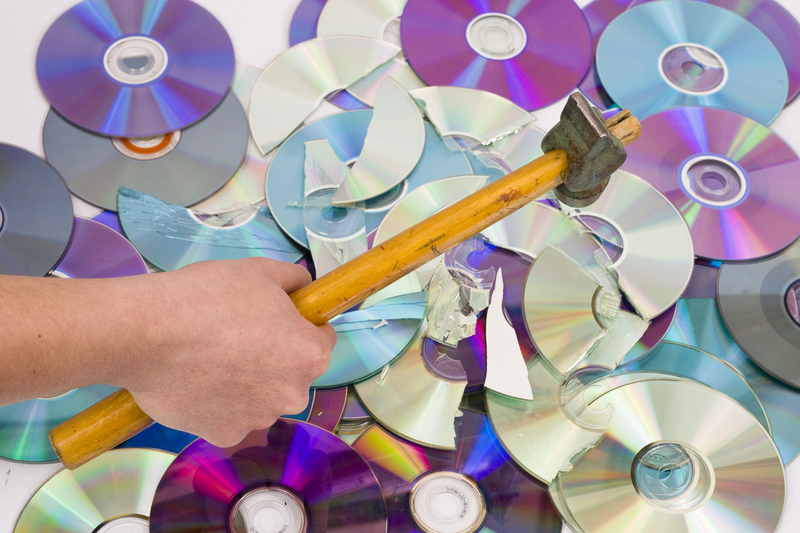Mastering Bulky Waste Items: Money-Saving Strategies That Work
Dealing with bulky waste items is a challenge that every homeowner, tenant, or business faces at some point. From broken furniture to old appliances and renovation leftovers, managing bulky waste can feel overwhelming, especially when looking for budget-friendly solutions. In this comprehensive guide, we will explore proven money-saving strategies for handling bulky items responsibly, efficiently, and sustainably.
Understanding Bulky Waste: What Does It Mean?
Before we dive into money-saving techniques, it's important to define bulky waste. These are large items that cannot be disposed of through regular household trash collection. Typical examples include:
- Furniture - sofas, wardrobes, mattresses, chairs, tables
- Large appliances - refrigerators, washing machines, ovens
- Garden waste - branches, logs, tree stumps
- Renovation debris - bathtubs, cabinets, doors, carpets, flooring
- Electronic waste - televisions, computers, printers
Mastering bulky waste removal not only helps you keep your property clutter-free, but is also important for environmental responsibility and can help you save money in surprising ways. Let's begin our exploration into cost-effective strategies for managing bulky items.

Why Is Bulky Waste Disposal So Expensive?
Many are shocked by the cost of bulky waste collection, especially when you compare it to regular trash. The main factors driving up prices include:
- Specialized collection trucks and equipment
- Manual labor for lifting and hauling heavy items
- Recycling and landfill fees
- Environmental compliance regulations
- Frequent need for sorting and processing
However, with the right knowledge and approach, reducing your bulky waste disposal costs is absolutely achievable.
Proven Money-Saving Strategies for Bulky Waste Items
1. Audit Your Bulky Waste and Plan Ahead
Start with an audit of what you intend to dispose of. List all your large waste items. Sometimes, what seems like rubbish to you could have value to someone else. Planning ahead allows you to:
- Identify items that can be sold, donated, or repurposed
- Batch items together for fewer, more cost-effective pickups
- Avoid unnecessary fees for items that could be managed in alternative ways
Key takeaway: A thoughtful inventory and plan will always yield cost savings.
2. Sell or Give Away Usable Bulky Items
One person's trash is another's treasure. Thanks to online marketplaces, repurposing large unwanted items is easier than ever. Consider the following approaches:
- Sell on platforms like Facebook Marketplace, Craigslist, eBay, or local classifieds
- Donate to local charities, shelters, or reuse organizations
- Offer for free via Freecycle or neighborhood social media groups
This approach isn't just about saving money on disposal; you can make extra cash or support your local community, while reducing landfill waste.
3. Leverage Municipal Bulky Waste Collection Services
Most cities and towns offer some form of bulky waste pickup, and it's often much cheaper than private haulers - sometimes even free for a limited number of collections per year. Typical details include:
- Pre-booked collection dates or scheduled community "clean-up" days
- Limits on the number or total weight of items per pickup
- Occasionally, restrictions on what is accepted
Check your local authority's website for annual free pickups, guidelines, and required procedures. Missing these opportunities can mean unnecessary expenses!
4. DIY Disposal: Rent a Truck or Trailer
If you have multiple bulky waste items and access to help, consider renting a truck or borrowing a trailer. Many waste transfer stations accept direct drop-offs from residents and often charge by the load size, which can be far less expensive than hiring a removal team.
- Gather neighbors or friends to share costs on rental and tipping fees
- Sort materials to maximize recycling for reduced charges
- Make sure to pre-check what your local depot accepts
DIY disposal is particularly recommended for those who are comfortable with some heavy lifting and organizing.
5. Repurpose, Upcycle, or Break Down Items
Innovative repurposing can help you avoid disposal costs completely. Old furniture, for example, can be upcycled into storage, garden planters, or play equipment. Appliances may be broken down to resell scrap metal or parts. Some ideas include:
- Create garden raised beds from wooden bed frames or doors
- Break down wardrobes or shelving for timber and firewood
- Recover appliance motors, copper wiring, or electronic boards for recycling
Upcycling and creative reuse is a growing trend, helping both your wallet and the environment.
6. Compare Bulk Waste Removal Services
If you need to hire a bulky waste removal company, don't accept the first quote. Instead, gather several estimates and ask for:
- Total costs including any "hidden" fees
- What items are/aren't included in the price
- Recycling commitments to minimize landfill tipping fees
Bulk discounts and price-matching can result in significant savings, especially for whole-house cleanouts or after renovations.
7. Use Recycling and Drop-Off Facilities
Many communities run recycling centers that accept large items for free or at a minimal charge. Typical accepted items include:
- Mattresses and beds
- Sofas, desks, and chairs
- White goods: fridges, freezers, washing machines
- Electronics and televisions
Some retailers also offer "take-back" schemes when you buy a replacement. This can save both time and money, and ensures responsible recycling of your bulky waste.
Common Mistakes: How to Avoid Extra Costs
- Mixing hazardous waste (like paints or chemicals) with bulk items - this can lead to expensive fines.
- Ignoring your community's free disposal days - plan your declutters accordingly.
- Using unlicensed haulers - always check credentials. Fly-tipping fines (illegal dumping) are very costly and you can still be liable.
- Overfilling skips or hired dumpsters - if the load is too heavy or stacked incorrectly, you'll often pay surcharge fees.
Sustainable Strategies for Bulky Waste Management
Sustainable disposal is not just an ethical obligation; it often aligns perfectly with money-saving goals. Here's how you can ensure your bulky items have a second life:
- Choose charities or non-profits that pick up furniture for free
- Sort items at source to maximize recycling opportunities
- Host a "giveaway" day in your neighborhood before big clear-outs
- Contact scrap metal collectors for appliances and metal furniture
- Ensure electronics are sent to e-waste centers for safe handling
Each effort reduces both environmental impact and financial burden.
Special Considerations: Bulky Items from Renovations
Renovation projects often generate significant bulky waste volumes. For these situations:
- Hire the right size skip or dumpster - overestimating size means wasted money, but underestimating results in extra charges.
- Recycle construction materials:
-
- Wood and timber (untreated) for mulch or composting
- Bricks and rubble for landscaping or donation to reclamation yards
- Old fixtures (doors, windows) may be valuable to architectural salvage companies
- Coordinate removal times to align with your community's bulk pickup schedule
Pro tip: Plan disposal logistics early in the renovation to avoid having materials pile up and incurring last-minute expensive pickups.
Frequently Asked Questions: Bulky Waste Mastery
- What qualifies as a bulky waste item? Generally, anything too large for regular curbside collection - furniture, appliances, large electronics, and renovation debris.
- How often can I leave bulky items out for collection? This varies by community - always check local council guidelines. Some areas offer quarterly pickups, others by appointment only.
- Can I leave my bulky waste outside hoping it will be taken? No. Unscheduled dumping can attract fines and creates neighborhood eyesores. Always follow municipal or company instructions.
- Are there penalties for improper disposal? Yes - heavy fines for illegal dumping or mixing hazardous waste with general bulk items.
- What should I do if I have multiple large items? Batch them for a single pickup, hire a skip, or plan DIY drop offs. Selling or donating first will always reduce your final cost.

Summary Table: Bulky Waste Money-Saving Decisions
| Strategy | Money-Saving Impact | Effort Level |
|---|---|---|
| Sell/Donate Items | Potential profit or zero disposal fees | Medium |
| Municipal Collection | Low-to-no cost, must comply with scheduling | Low |
| DIY Drop-off | Save on labor; pay only for tipping charges | Medium-High |
| Bulk Service Comparison | Find the best rates; avoid add-on fees | Low |
| Upcycling & Repurposing | Zero cost; may even save on home improvement | Variable |
Conclusion: Make Bulky Waste Management Work for You
With thoughtful preparation and a mastery of cost-efficient bulky waste strategies, you can reclaim your space, contribute to sustainability, and keep your hard-earned cash where it belongs. Whether you sell, donate, recycle, or judiciously use local collection services, each step you take makes bulky waste management faster, cheaper, and more environmentally friendly.
Take the time to plan ahead, explore every option, and always check with local authorities for rules and opportunities unique to your area. By doing so, your next big clean-out or renovation can be tackled without breaking the bank or burdening the planet. Mastering bulky waste disposal is all about making smart, informed choices - and now, you're ready to do just that!
Ready to start? Begin with a list of your current bulky waste items and see how many money-saving avenues you can apply today.
